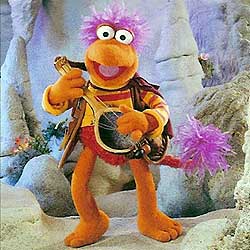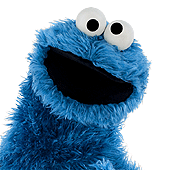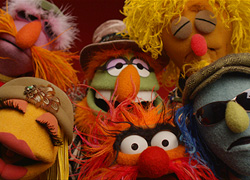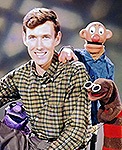matleo
Well-Known Member
- Joined
- Apr 13, 2002
- Messages
- 1,151
- Reaction score
- 50
Re: This is fun
When you look at something like "Book of Pooh" on Disney channel they were workign with a very special set of cirumstances. As I understand it, they DID do a test to see if they could get the puppeteers to voice the characters, but the voices of those characters are known SO strongly in the audeinces heads it didn't seem like Pooh, Piglet and Tigger w/o Jim Cumming and John Fiddler. Also since many of the each puppet was worked by a team of 3-4 people again it was helpful for them to be able to tal thorugh what they were doing. All of the voices were recorded onto a CD (with every line being it's own track) and the puppeteers would have that playign and lip synch ot it as they went. Since each line as it's own track, the puppeteers DID have the ability to adjust the timing on what they were doing...."Give us a beat there cause we're going to have Piglet fall down"
If I've learned one thing about puppetry and puppet performance it's this: there are no hard and fast rules. You have to do what works to achieve the effect you want. And there are advantages and disadvantages to each and every methos that comes up. Someone mentioned armwires and i think that's a good example. you can do it with one-person which means you're less inhibited, you can use one amr and let the second hang there or be pinned onto the chest and I've seen a second puppeteer assist on a second arm (how do you think Gonzo gets those insired moments) or work both arms while one puppeteer works the head. What's odd is that more and more recently I've seen puppeteers doing hand and rod characters with the assistance of another. It's all a matter of what works for you. anyway, that's my two cents on the matter.
--Matt
I wanted otaddress ths for a second cause I disagree with parts of it. I think it's pretty 50/50 split in terms of what puppeteers are doing these days. and that's true for both television and live theater. I work for a marionette company where we do shows form a tape and very often it drives us nuts ot be on someone elses timing, but because of the complexity of some of the stuff we do, it;s great that we can talk things out...."one, two, three, turn!" you know that kind of thing. I also tour my own shows which I do live and it's nice ot have the kind of freedom I need to be bale to adjust my timing or sometimes an entire scene as I'm doing the performance to suit the audience. For the most part, the muppets do use there own voices although I know that in many of the recent muppet films Frank Oz and Jerry Nelson have ben MIA on the set, but gone in and looped characters in later. or when you have a scene with both Fozzie and Miss Piggy for example. I also know that most musical numbers are pre-recorded for obvious reasons.Originally posted by Hays
Muppets are some of the few puppets that still use live voice; most puppeteers work from a tape. Personally, I think the ability to ad lib and add life to a character is the whole REASON to use a puppet, but apparently Disney Channel doesn't agree.
When you look at something like "Book of Pooh" on Disney channel they were workign with a very special set of cirumstances. As I understand it, they DID do a test to see if they could get the puppeteers to voice the characters, but the voices of those characters are known SO strongly in the audeinces heads it didn't seem like Pooh, Piglet and Tigger w/o Jim Cumming and John Fiddler. Also since many of the each puppet was worked by a team of 3-4 people again it was helpful for them to be able to tal thorugh what they were doing. All of the voices were recorded onto a CD (with every line being it's own track) and the puppeteers would have that playign and lip synch ot it as they went. Since each line as it's own track, the puppeteers DID have the ability to adjust the timing on what they were doing...."Give us a beat there cause we're going to have Piglet fall down"
If I've learned one thing about puppetry and puppet performance it's this: there are no hard and fast rules. You have to do what works to achieve the effect you want. And there are advantages and disadvantages to each and every methos that comes up. Someone mentioned armwires and i think that's a good example. you can do it with one-person which means you're less inhibited, you can use one amr and let the second hang there or be pinned onto the chest and I've seen a second puppeteer assist on a second arm (how do you think Gonzo gets those insired moments) or work both arms while one puppeteer works the head. What's odd is that more and more recently I've seen puppeteers doing hand and rod characters with the assistance of another. It's all a matter of what works for you. anyway, that's my two cents on the matter.
--Matt

 Welcome to the Muppet Central Forum!
Welcome to the Muppet Central Forum! Back to the Rock Season 2
Back to the Rock Season 2 Sesame Street Season 54
Sesame Street Season 54 The Muppets Mayhem premieres
The Muppets Mayhem premieres Bear arrives on Disney+
Bear arrives on Disney+ Sam and Friends Book
Sam and Friends Book
